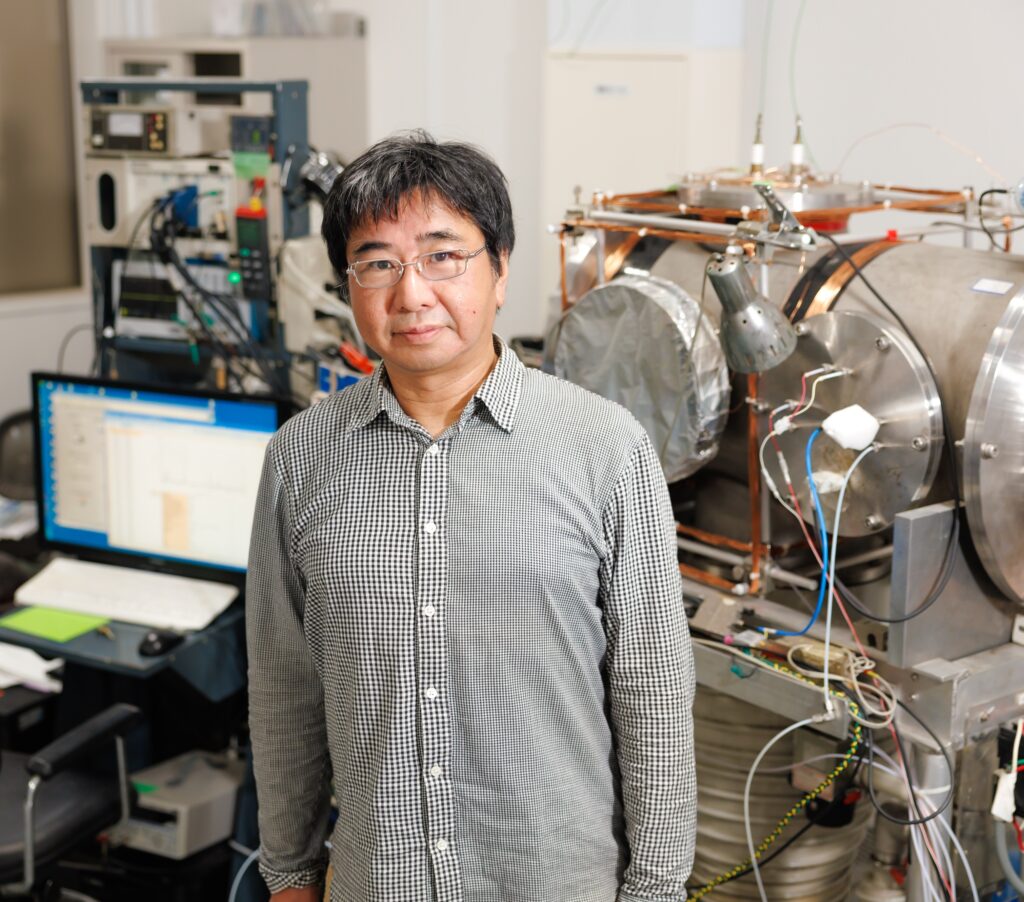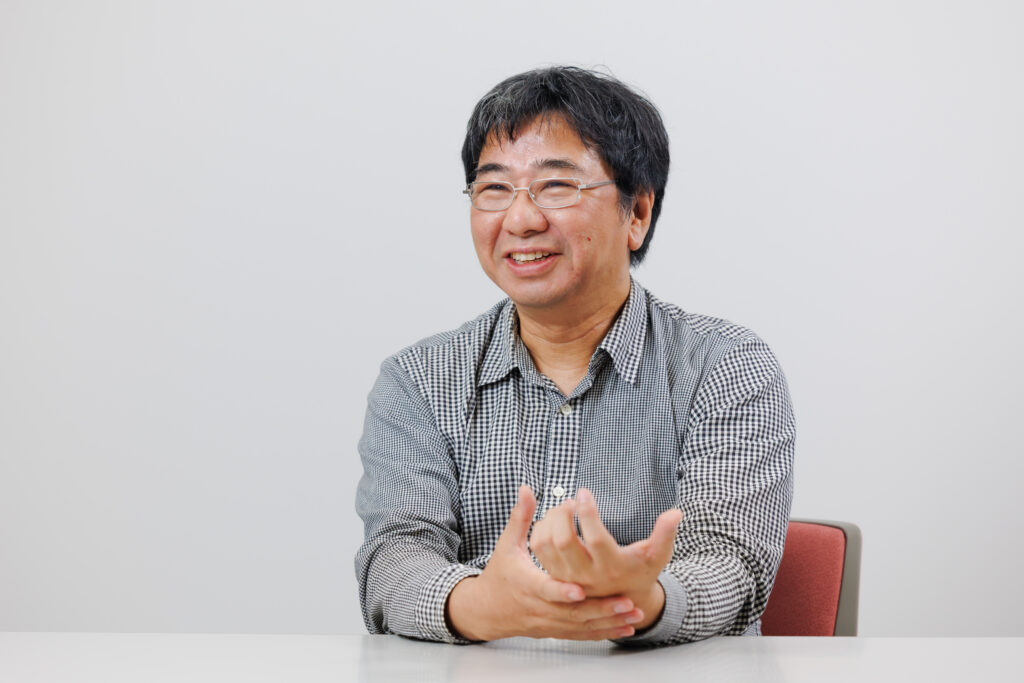
Professor Nobuhiko Kuze from the Faculty of Science and Technology specializes in physical chemistry. He undertakes research about the molecular structures in a gas phase using a two-pronged approach: spectroscopic experiments using microwave radiation and theoretical calculations based on quantum mechanics.
I analyze the spectra of the molecules irradiated by the electromagnetic waves to determine the molecular structures and physical properties that cannot be seen with the naked eye. This is a research field known as molecular spectroscopy.
In our laboratory, we analyze the data related to molecules in a gas phase by the spectroscopic experiments using microwaves. We target substances that are sensed as odors by humans and animals, and so far, we have analyzed the molecular structures of 20 to 30 molecules. Currently, we are analyzing the microwave spectrum of the molecule known as leaf aldehyde.
Deriving answers by linking theoretical calculations to experimental data

In the gas phase, each molecule is isolating and rotating, and we can determine the three-dimensional shape of a molecule by the data analysis of the rotational spectrum of the molecule. We know that some molecules with the same chemical formula have several isomers with different conformations. Rotational spectroscopy is suitable experimental method for investigating the precise molecular structures.
Understanding the molecular structure is the starting point for unraveling the mechanism of sensing odor. Each day, we are observing and analyzing the experimental data.
In our experiments, precise measurement of the spectra is most important. However, we cannot determine the molecular structure by looking at the observed data alone. In parallel with the observation of the spectra, additional information is necessary to analyze the complicated pattern of the observed spectra. Quantum chemical calculations is the powerful method for the spectral analysis.
In other words, we can calculate the spectrum patterns in advance using the predicted molecular structure by the theoretical calculation and use the patterns as reference for the analysis of observation data to gradually understand the molecular structure. Fitting the calculated spectral patterns against the observed data is a trial-and-error process. Trying to fit the pieces of the puzzle together can be monotonous, but I get a great sense of achievement when the results of data analysis perfectly reproduce the observed data.
Searching for undiscovered interstellar molecules found in space
We do not only observe and analyze molecules found on earth. Spectra emitted by various molecules in space reach the earth, and by facing radio telescopes to observe them, we can know the types of molecules that exist in a certain area in space. In fact, scientists from countries all over the world are conducting such astrophysical surveys, and so far, more than 200 interstellar molecules have been discovered.
Many interstellar molecules have distinct structures, and some are unable. In the analysis of molecular structures with such short lifetime, it is necessary to create the candidate molecules for a brief moment inside the spectrometer in the laboratories. Therefore, another important research topic is to develop experimental methods using flexible ideas, such as mixing two types of gases and using an electric discharge to create new molecules.
It is not easy to create new molecules that serve as candidates for interstellar molecules. Even so, through repeated experiments, there are times when we find molecules with distinct structures.
Someday, the molecules analyzed in my laboratory may be discovered in space. This is another motivation for my research. Going forward, I hope to continue to accumulate all kinds of data through experiments and leave behind highly precise data about a variety of molecular structures for future generations to support research activities in a wide range of scientific fields.
The book I recommend
“On Wings of Song”
by Thomas M. Disch, Japanese translation by Yasuko Tomoeda, Kokushokankokai

This is a science fiction novel that I read while in high school. The story is a bildungsroman in a near-future United States, the protagonist tries to “fly” to a different world through singing. I found it interesting for its insights into the ideal shape of society along the lines of social issues such as race, religion, and the economy.
-
Nobuhiko Kuze
- Professor
Department of Materials and Life Sciences
Faculty of Science and Technology
- Professor
-
Graduated from the Department of Chemistry II, School of Science, Hokkaido University, Japan and received his Ph.D. in Science after completing the doctoral course of the Graduate School of Science, Hokkaido University. Took on the positions of assistant and lecturer at the Department of Chemistry and associate professor at the Department of Materials and Life Sciences at the Faculty of Science and Technology, Sophia University before assuming his current position in 2016.
- Department of Materials and Life Sciences
Interviewed: September 2023